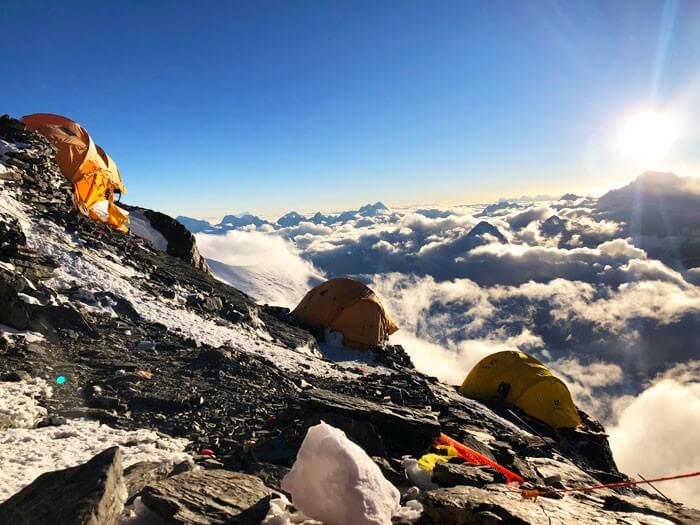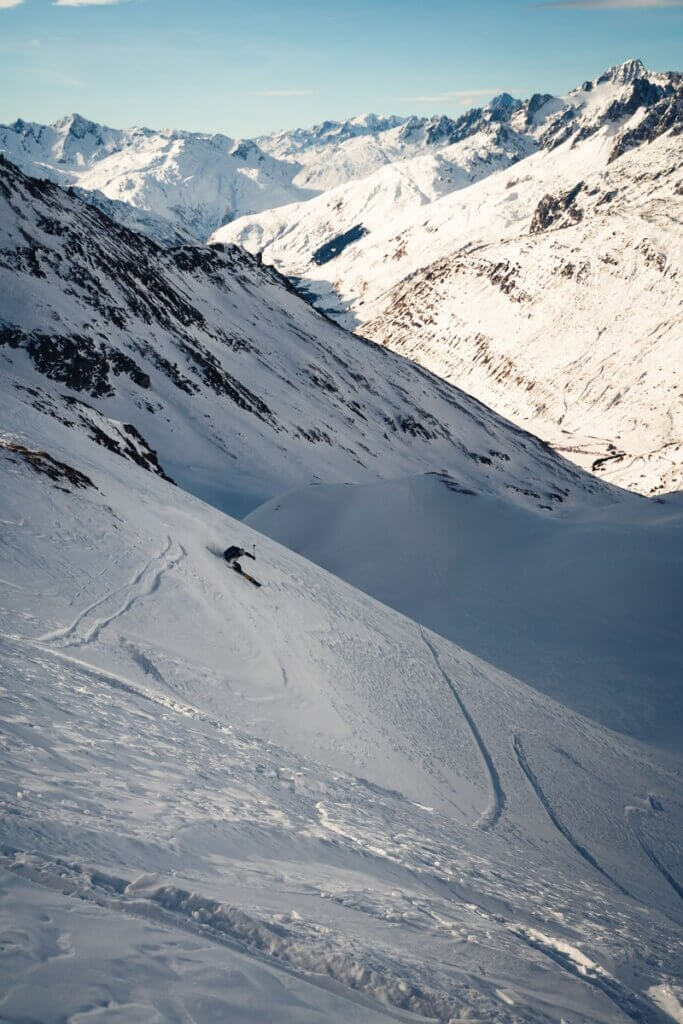General overview
Mount Everest at 8,848 meters / 29,035 feet is the tallest and perhaps most coveted mountain in the world. The south (Nepalese) side is the route first climbed by Tenzing and Hillary in 1953, and the dates we have chosen feature the best weather of the year. The Nepal side of Everest is warmer and less windy than the Tibet side. The approach to base camp includes one of the most beautiful treks in the world, and goes through tiny villages and teahouses and camps in sunny meadows beneath stunning peaks. Mountaineering through the south col route is considered accessible and easier compared to north col ridge
The climb is led by Dan Mazur and David O’Brien . With decades of experience in Himalayan climbing, the leaders and expert Sherpa provide a safe and enjoyable expedition to the top of the world.
Itinerary
1) Arrive in Kathmandu, 1300 metres (4,265 feet). Stay at hotel.
2) Orientation meeting, checking of your climbing gear and guided shopping to buy last minute supplies, visit temples, and tour the city. Stay at hotel.
3) Fly to Lukla, 2860 metres (9,385 feet). Walk to Phakding 2650 metres (8,695 feet). Stay in Teahouse.
4) Walk to Namche Bazaar, 3450 metres (11,320 feet). Teahouse.
5) Rest day with acclimatization hike to Everest View Hotel in Namche. Teahouse.
6) Walk to Pangboche, 3750 metres (12,300 feet). Participate in a Buddhist Puja blessing ceremony with the local Lama at the monastery if you wish. Teahouse.
7) Walk to Dingboche, 4410 metres (14,470 feet). Teahouse.
8) Acclimatization walk in Dingboche to 5000 metres (16,400 feet), return to Dingboche.
9) Walk to Lobuche, 4900 metres (16,075 feet). Teahouse.
10) Walk to basecamp, 5340 metres (17,400 feet). Camping
11) Rest, organization, and climbing gear checking in basecamp.
12) Ice training on the seracs of the Khumbu Glacier in basecamp.
13) Walk to Pumori advanced basecamp, 5800 metres (19,000 feet). Sleep there.
14) Rest in basecamp
15) Climb to camp 1 at 6100 meters (20,010 feet). Sleep at camp 1.
16) Rest in Camp 1
17) Walk partway to Camp 2. Return to camp 1. Sleep at camp 1
18) Climb to camp 2 at 6600 metres (21,500 feet). Sleep there.
19) Rest in Camp 2
20) Rest in Camp 2. Walk to the base of the Lhotse Face and return to camp 2. Sleep in Camp 2.
21) Rest in Camp 2
22) Climb to camp 3 at 7300 metres (23,950 feet). Sleep in Camp 3
23) Walk/Climb down to camp 2. Sleep in Camp 2
24) Walk down to basecamp
25) Rest in basecamp.
26) Rest in basecamp.
27) Descend to a lower village such as Pangboche at 3750 metres (12,300 feet). Or rest in basecamp.
28) Rest in lower village. Or rest in basecamp.
29-39) Rest in lower village and wait for the summit window. Or rest in basecamp.
40) Return to basecamp from lower village. Or rest in basecamp.
41) Return to basecamp from lower village. Or rest in basecamp.
42) Rest in basecamp. Wait for summit window.
43) Rest in basecamp. Wait for summit window.
44) Climb to camp 2, sleep there.
45) Rest in Camp 2
46) Climb to camp 3, sleep there.
47) Climb to camp 4, sleep there.
48) Attempt summit.
49) Extra day for summit attempt
50) Return to camp 2.
51) Return to basecamp.
52) Pack up basecamp.
53) Trek down to Pheriche. Teahouse.
54) Trek down to Pangboche. Teahouse.
55) Trek to Namche. Teahouse.
56) Trek to Lukla. Teahouse.
57) Flight from Lukla to Kathmandu. Stay at hotel.
58) Extra day for Lukla flight to Kathmandu. Stay at hotel.
59) Extra day in Kathmandu, in case of delay, and for sightseeing, gift shopping. Hotel.
60) Fly Home. Thanks for joining our expedition!
Good to know
Experienced leaders: Dan Mazur and David O’Brien, from UK and USA, 12 Everest expeditions, friendly, good teachers, well organized. Super qualified friendly helpful Sherpas with more than 10 ascents.
Sherpa: Member Ratio:1:1
Our “full-service” expedition includes:
- British, American, and European leader/coordinator
- 5-bottle set of oxygen, mask, hoses, and regulator (More oxygen available on request)
- 1:1 Climbing Sherpa to member ratio
- All internal/domestic transport
- Full-service trek to/from base camp
- Three meals per day
- Permit fees and liaison officers
- Group gear, emergency equipment, satellite phone
- Personal tents in basecamp (no sharing)
- Double occupancy tents above base camp
- Full base camp with dining tent, showers, bathroom, and solar charging
- Two nights stay in Kathmandu hotel on arrival and two nights before departure in a double room. Private rooms are available for a small additional fee.
What is not included?
- International flights to Kathmandu and back home
- Mountain climbing rescue and travel insurance
- Personal climbing/trekking equipment and clothing
- Extra Oxygen (available on request)
- Nepal visa
- Gratuities for staff
- Personal Sherpa
If purchased separately:
- Mask + Hoses (guaranteed to be in proper working order and match the bottles and regulator perfectly): $285 USD.
- Regulator for high-altitude oxygen bottle (guaranteed to be in proper working order and match the bottle and mask and hoses perfectly): $485 USD.
- One large Russian Oxygen 4-litre bottle for high-altitude climbing (guaranteed to be in proper working order and match the regulator and mask and hoses perfectly): $610 USD each.
- Oxygen buy-back policy: We have a 30% discount buy-back policy on unused oxygen bottles, regulators in good condition, and masks and hoses in good condition.























